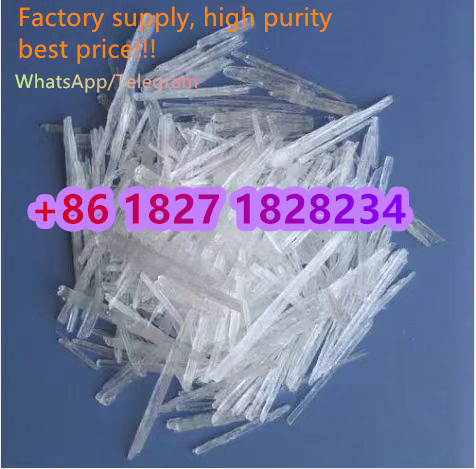Advertisements



CAS 89-78-1 DL-Mentho methylethyl)-cyclohexanol
| Price: | US$ 10 |
|---|---|
| Minimum Order: | 10G |
| Payment Terms: | TT |
| Port of Export: | Shanghai |
Product Details
| Model No.: | powder | Brand Name: | 89-78-1 |
|---|
| Certification: | coa |
|---|---|
| Specification: |
[Synonyms]
(1α,2β,5α)-5-methyl-2-(1-methylethyl)cyclohexanol 2-(1-methylethyl)-5-methyl-cyclohexanol 2-isopropyl-5-methyl-cyclohexano 5alpha-Methyl-2beta-(1alpha-methylethyl)cyclohexanol component of Dermoplast component of Robitussin cough drops component of Theragesic Cyclohexanol, 2-isopropyl-5-methyl- cyclohexanol,2-isopropyl-5-methyl- Fancol menthol Fisherman's friend lozenges headachecrystals Menthacamphor Menthol terpine hydrate Menthomenthol Peppermint camphor peppermintcamphor Racemic menthol Therapeutic mineral ice |
Packaging & Delivery
| Packaging: | bag |
|---|---|
| Delivery/Lead Time: | 1 day |
| Production Capacity: | 100kg/week |
Product Description
[Physical properties]
Appearance: colorless or white acicular prismatic crystals or white crystalline powder. Solubility: easily dissolved in ethanol, chloroform, ether, liquid paraffin, or volatile oil and soluble in water. Odor: a cool, refreshing, and pleasant mint aroma, sweet odor, and taste cool early after burning. Boiling point: 212?®C. Melting point: 41–43?®C. Specific optical rotation: ?49 to ?50®.
Reported found in peppermint and other mint oils (e.g., M. arvensis), lemon peel oil, cranberry, pineapple, cab bage, thymus, egg, rum, cocoa, tea, honey, avocado, coriander, mango, rice, litchi, dill herb, calamus, juniper berries, fennel, buchu oil, clam and Roman chamomile oil, Mentha species.
In the world of aromatic chemicals, menthol is often described as a unique source of skin and mucous membranes. Menthol is mainly extracted from natural plants. The vast majority of natural menthol in the global market is extracted from numerous Asian mint. In 2006, the world’s natural menthol production is 12,800?tons or more. However, due to various factors, the production of natural menthol is becoming less and less. Since the 1960s, Japan, Germany, and other countries had developed the synthetic menthol products. In 1974 the German company Symrise and Japan Takasago Fluidic Systems company launched chemical synthesis of menthol. At present, attention has been paid to the study of menthol analogy substances and the effect of the changes of molecular structure on the aroma and cool sensation. Some studies have shown that hydroxyl groups located in the branched or 1, 4 chain cannot show a sense of cool. The researchers believed that menthol analogy substances with optical activity should be able to show different, surprising cooling effect, and the structure of hydroxyl alkyl groups is the key point to have a cooling effect. The Japanese chemist Ryoji Noyo and his colleagues found that in BINAP and rhodium complexes as catalysts for asymmetric hydrogenation reaction, the synthesis of menthol is very effective. Because of the contribution of asymmetric organic synthesis, they won the 2001 Nobel Prize in Chemistry.






|
SUPPLIER PROFILE
|
|||
|---|---|---|---|
| Company: | nobel | ||
| City/State | hk, HONGKONG | Country: |
Japan 
|
| Business Type: | Export - Manufacturer / Trading Company | Established: | 2011 |
| Member Since: | 2024 | Contact Person | Grace Cyphp |
SUPPLIER PROFILE
City/State/Country -
hk, HONGKONG
Japan 

Business Type -
Export - Manufacturer / Trading Company
Established -
2011
Member Since -
2024
Contact Person -
Grace Cyphp



